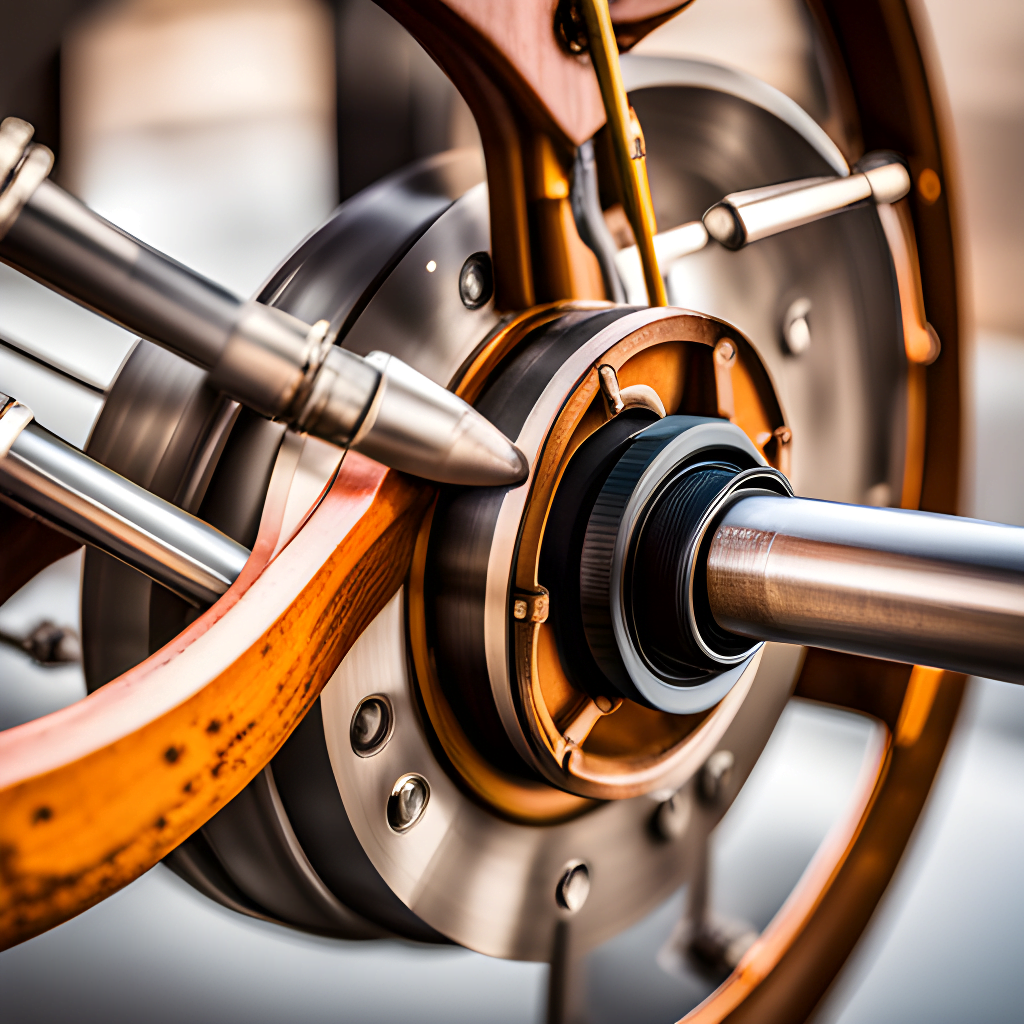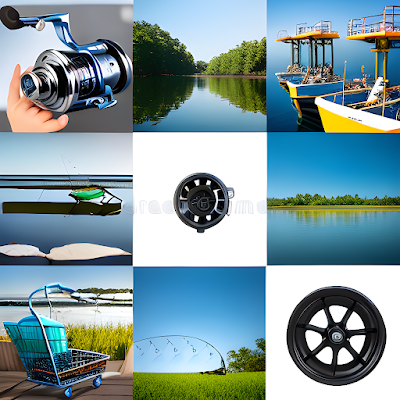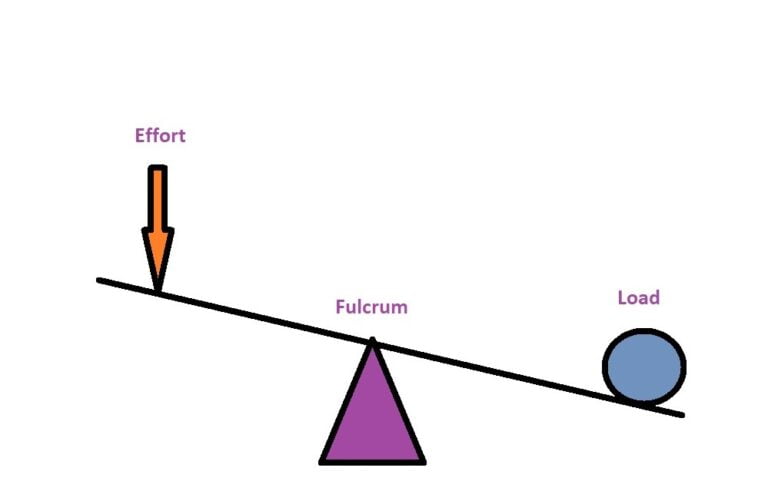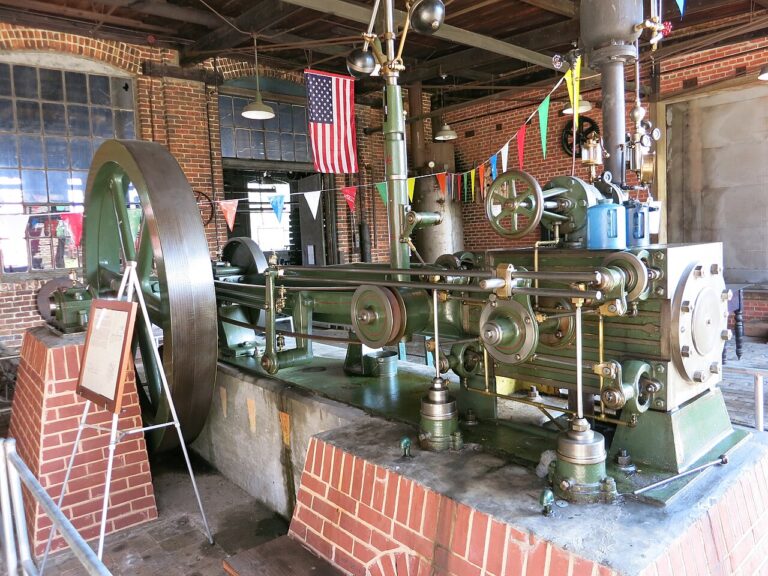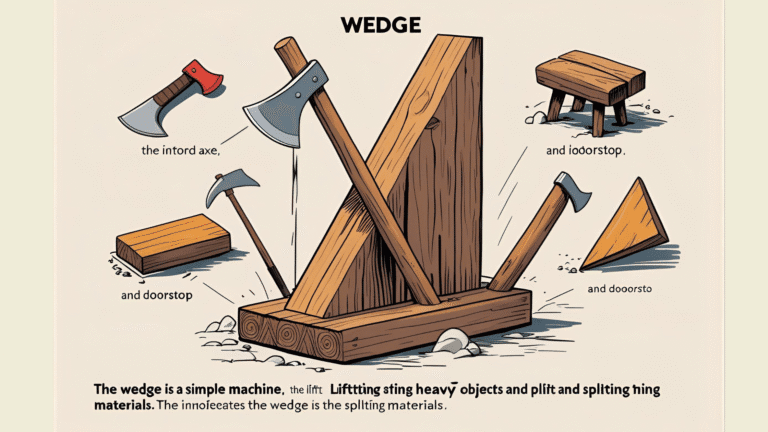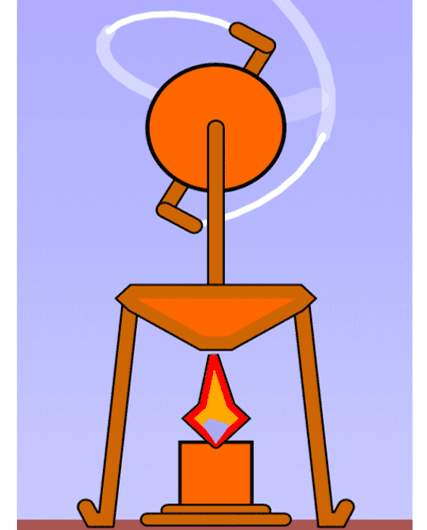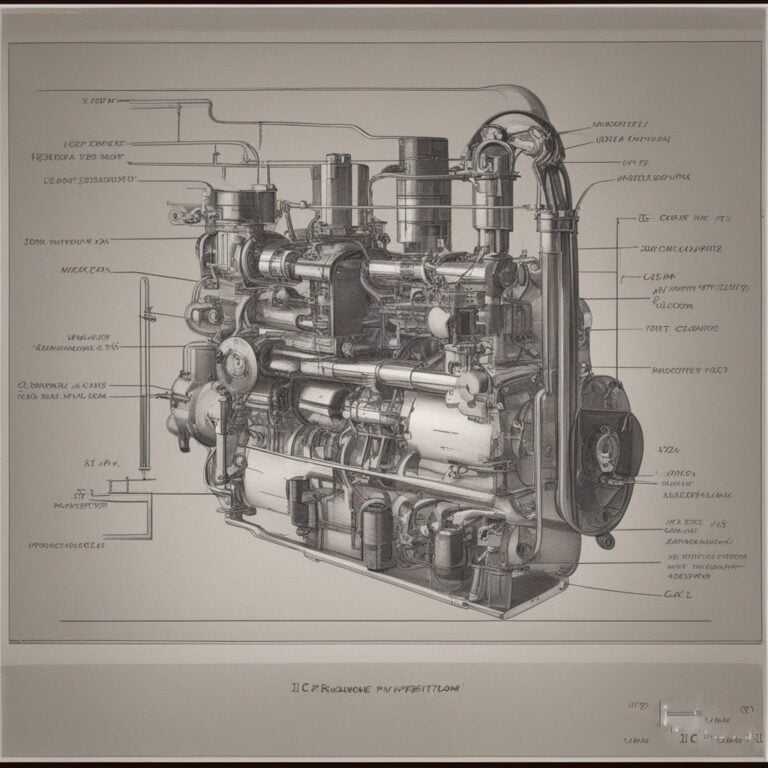Introduction- Wheel and Axle
Imagine a world without wheels. No bicycles gliding down sun-drenched paths, no cars navigating bustling city streets, no towering Ferris wheels gracing amusement parks. It’s a reality almost unimaginable, yet one that underscores the profound impact of the Simple machine-wheel and axle. This seemingly simple mechanism, a cornerstone of human ingenuity, has revolutionized transportation, construction, and countless other aspects of our lives.
Prepare to embark on a captivating journey through time, where we’ll delve into the ancient origins of the wheel and axle, explore its ingenious mechanics, and witness its transformative impact on human civilization. We’ll meet the visionary minds who refined this invention, and uncover the fascinating scientific principles that govern its operation.
So, buckle up (or perhaps, unhitch your ox-drawn cart) and get ready to be amazed by the power of the wheel and axle!
History of the Wheel and Axle
Prehistoric Era (Before 3500 BC):
-
Early precursors: Evidence suggests the use of rollers and logs as early as 3500 BC, possibly for transporting heavy objects over short distances. These rudimentary tools hinted at the potential of the wheel concept.
- Archaeological findings: Excavations at sites like Mesopotamia and the Indus Valley civilization have unearthed clay figurines depicting sledges and carts, suggesting the use of rollers and logs for pre-wheel transportation. (Source: “The Invention of the Wheel” by David Anthony)
- Experimental studies: Studies replicating the use of rollers and logs for moving heavy objects have demonstrated their feasibility, highlighting their potential role as precursors to the wheel. (Source: “The Wheel: Its History and Development” by John Patterson)
4th Millennium BC:
-
Birth of the wheel: The earliest definitive evidence of the wheel appears in Mesopotamia (present-day Iraq) around 3500-3000 BC. These solid wooden discs with axle holes were likely used for pottery production and possibly for transportation on sledges.
- Archaeological discoveries: The oldest known wheel, a solid clay disc with an axle hole, was unearthed at the Mesopotamian site of Tell Hassuna, dating back to around 3500 BC. (Source: “The Wheel and Its Inventors” by Cyril Stanley Smith)
- Studies of pottery production: Research suggests that early potters may have used wheels to aid in shaping and smoothing clay vessels, contributing to the development of the wheel technology. (Source: “The Potter’s Wheel” by Elizabeth Collard)
3rd Millennium BC:
-
Evolution of the wheel: Spoked wheels emerge in Mesopotamia and surrounding regions. These lighter and more efficient wheels revolutionized transportation, enabling the development of carts and chariots.
- Visual representations: Depictions of spoked wheels appear on Mesopotamian cylinder seals and clay tablets from around 3200 BC, showcasing the transition from solid to spoked wheels. (Source: “The Early Development of Wheeled Vehicles” by Güterbock)
- Engineering analysis: Studies analyzing the strength and efficiency of spoked wheels compared to solid wheels highlight the significant advantages they offered for transportation purposes. (Source: “Wheel Mechanics: Science and Engineering of Rolling Contact” by Pacejka)
2nd Millennium BC:
-
Spread of the technology: The wheel and axle concept spreads throughout Europe, Asia, and Africa, facilitating trade, warfare, and construction.
- Archaeological evidence: The presence of wheel ruts on ancient roads and the discovery of wheel components in various archaeological sites across these continents demonstrate the widespread adoption of the technology. (Source: “The Wheel and Its Journey: Tracing History Through Technology” by Peter Bahn)
- Historical records: Early texts from various civilizations, such as the Indus Valley civilization and China, mention the use of carts and chariots, further supporting the global dissemination of the wheel and axle. (Source: “The History of Technology” by Charles Singer)
1st Millennium BC:
- Refined applications: The wheel finds diverse applications in various cultures, with archaeological evidence and historical texts providing compelling proof:
- Waterwheels for irrigation: The earliest waterwheels, powered by flowing rivers, appear in Mesopotamia around 500 BC. These devices revolutionized agriculture by enabling efficient irrigation of crops (Source: “Water Lifting Devices in Mesopotamia” by Giorgio Iafejian).
- Grinding stones for processing grains: Rotatory querns, utilizing the wheel and axle principle, become widespread for grinding grains into flour. Evidence of these tools is found in archaeological sites across Europe, Asia, and Africa (Source: “A History of Hand Querns” by Penelope Davis).
- Spinning wheels for textile production: The invention of the spinning wheel, likely originating in India around the 5th century AD, significantly improved textile production efficiency. Literary references and depictions in artwork support this claim (Source: “The Spinning Wheel: A History” by Beatrice Phillpotts).
Medieval Era (5th-15th Centuries AD):
- Horse-drawn carriages: The invention of the horse collar in the Middle Ages allows for the efficient use of horses for pulling carriages, further revolutionizing transportation. This development is documented in historical texts and artwork depicting horse-drawn vehicles (Source: “The Horse Collar and Medieval Economy” by Lynn White Jr.).
Industrial Revolution (18th-19th Centuries AD):
The wheel takes center stage: The Industrial Revolution witnesses a surge in the use of the wheel and axle in various machinery, including:
-
- Textile mills: Power looms, driven by water wheels or steam engines, revolutionized textile production (Source: “The Power of the Factory: Workers and Machines in the Industrial Revolution” by Edward P. Thompson).
- Steam engines: The iconic steam engine, a key driver of the Industrial Revolution, relied heavily on the wheel and axle principle for various components (Source: “A Short History of the Steam Engine” by S. Smiles).
- Locomotives: The invention of the locomotive in the early 19th century marked a new era in transportation, with the wheel and axle playing a crucial role in its operation (Source: “The Locomotive: A History” by Christian Wolmar).
20th and 21st Centuries:
- Continuous innovation: The wheel and axle continues to be a fundamental component in countless modern inventions, from automobiles and bicycles to wind turbines and amusement park rides. Its presence in diverse applications underscores its enduring relevance and adaptability.
Beyond the Timeline:
- The future of the wheel: As technology advances, the wheel and axle may evolve further, potentially adapting to new materials, applications, and even extraterrestrial exploration. The potential for reinventing the wheel, in both literal and figurative sense, remains an exciting prospect for the future.
Mechanical Advantage
The mechanical advantage (MA) of a wheel and axle is the ratio of the force applied to the effort distance (the radius of the wheel) to the force exerted against the resistance distance (the radius of the axle). In simpler terms, it tells you how much easier the wheel and axle makes it to lift or move a load.
Here’s the formula for calculating the mechanical advantage:
MA = Radius of Wheel (Effort Distance) / Radius of Axle (Resistance Distance)
Understanding the concept:
Imagine a wheel and axle system where you apply a force by pushing down on the rim of the wheel (effort). This force rotates the wheel, and the axle attached to the wheel rotates as well. The load you want to lift or move is attached to the axle.
- Larger wheel, higher mechanical advantage: If the wheel has a larger radius compared to the axle, it requires less force applied to the wheel to lift the same weight on the axle. This translates to a higher mechanical advantage.
- Smaller wheel, lower mechanical advantage: Conversely, if the wheel has a smaller radius than the axle, you need to apply a greater force to the wheel to lift the same weight on the axle. This results in a lower mechanical advantage.
Real-world examples:
- Doorknob: The doorknob acts as a wheel and axle, where the handle is the wheel and the spindle connecting the knob to the latch is the axle. The larger diameter of the knob compared to the spindle provides a mechanical advantage, making it easier to turn the knob and open the door.
- Well bucket: When using a well bucket, the rope is wrapped around the wheel (windlass), and the bucket is attached to the axle. The larger diameter of the wheel compared to the axle allows you to lift the heavy bucket of water with less effort.
- Bicycle: The pedals act as the wheel, and the sprocket on the rear wheel acts as the axle. The larger diameter of the pedals compared to the sprocket provides a mechanical advantage, allowing you to propel the bicycle forward with less effort.
Important points to remember:
- While the wheel and axle provides a mechanical advantage, it does not violate the law of conservation of energy. The work done (force x distance) remains the same, but it is distributed differently.
- Friction in the system can reduce the actual mechanical advantage achieved compared to the theoretical value calculated using the formula.
How do Wheels and Axles Work?
At its core, the wheel and axle is a simple machine designed to facilitate the movement of objects with less effort. It consists of two primary components: a wheel and an axle. The wheel is a circular object with a central hub, while the axle is a rod or shaft that passes through the hub. When force is applied to the wheel or the axle, the other component rotates in response, allowing for the efficient transfer of energy.
Components:
- Wheel: A circular disc with a larger radius.
- Axle: A rod that passes through the center of the wheel, allowing it to rotate.
- Effort force: The force applied to the wheel to cause rotation.
- Load: The resistance force to be overcome, typically attached to the axle.
Working principle:
- Applying effort force: An effort force is applied to the wheel, typically by pushing or pulling at its rim. This force creates a torque, which is the turning force acting on the wheel.
- Torque and rotation: The applied torque causes the wheel to rotate around the axle.
- Leverage and mechanical advantage: The radius of the wheel acts as a lever arm for the effort force. The ratio of the wheel’s radius to the axle’s radius determines the mechanical advantage of the system.
- Overcoming resistance: As the wheel rotates, the axle also rotates due to their connection. This rotation transmits the effort force to the load attached to the axle.
- Mechanical advantage in action: Depending on the mechanical advantage, the effort force can be amplified or reduced to overcome the resistance of the load.
Mechanical Advantage:
The mechanical advantage of a wheel and axle system is calculated by dividing the radius of the wheel (effort distance) by the radius of the axle (resistance distance):
MA = Radius of Wheel / Radius of Axle
- MA > 1: When the wheel radius is larger than the axle radius, the mechanical advantage is greater than 1. This means the effort force required is less than the force exerted on the load.
- MA = 1: When the wheel and axle radii are equal, the mechanical advantage is 1. The effort force is equal to the force exerted on the load.
- MA < 1: When the wheel radius is smaller than the axle radius, the mechanical advantage is less than 1. This means the effort force required is greater than the force exerted on the load.
Examples in Everyday Life
The wheel and axle is so deeply integrated into our daily lives that we often take it for granted. Here are some common examples:
Cars:
The wheels on your car, with their axles, allow you to drive smoothly and efficiently.
 |
| Car Wheel |
Bicycles:
Bicycles utilize the wheel and axle mechanism for propulsion, making it easier to cover long distances with less effort.
 |
| Bicycle Wheels |
Doorknobs:
Turning a doorknob is a simple application of the wheel and axle, allowing you to open doors effortlessly.
Shopping Carts:
The wheels and axles on shopping carts make it easy to maneuver heavy loads through a store.
 |
| Application of Wheel and axle- Luggage bag and shopping cart |
Luggage Wheels:
Suitcases with wheels and retractable handles use the wheel and axle to make travel more convenient.
Machines where force is applied to the axle:
Mechanical Advantage:
When force is applied to the axle in a wheel and axle system, the mechanical advantage is gained in terms of increased force. This means that a smaller force applied to the axle can produce a larger force at the wheel.
Speed Trade-off:
The trade-off for the increased force is a decrease in speed. When the wheel rotates, it covers a greater distance than the axle in the same amount of time. So, the wheel rotates slower than the
axle.
Everyday Examples:
Doorknob:
When you turn a doorknob, you apply force to the small axle, which then rotates the larger wheel, making it easier to open or close the door.
Fishing Reel:
In a fishing reel, the handle (axle) is turned to wind up the fishing line on a spool (wheel), allowing you to reel in a fish more easily.
Steering Wheel in a Car: When you turn the steering wheel, you are applying force to the small axle connected to the steering column, which then turns the larger wheel that controls the direction of the car.
Machines where force is applied to the wheel:
Mechanical Advantage:
When force is applied to the wheel in a wheel and axle system, the mechanical advantage is gained in terms of increased speed. This means that a smaller force applied to the wheel can result
in a larger force at the axle.
Force Trade-off:
The trade-off for the increased speed is a decrease in force. It’s easier to turn the wheel quickly, but it requires more force at the wheel to move the axle effectively.
Everyday Examples:
Bicycle:
When you pedal a bicycle, you apply force to the outer wheel, which then rotates the smaller axle connected to the bike’s gears. This allows you to travel at a higher speed while applying less force.
Ceiling Fan:
In a typical ceiling fan or desk fan, you turn on the motor, and it applies force to the blades (the wheel) mounted on the fan’s hub (the axle). The motor imparts rotational motion to the blades, and they spin rapidly, moving air and providing cooling or ventilation in a room. You control the fan’s speed by adjusting the force applied to the blades through a switch or remote control.
Grinding Wheel:
In a grinding machine, the abrasive wheel is rotated at high speed, and the workpiece is pressed against it. Force is applied to the wheel to grind or sharpen materials.
Rotary Hand Whisk:
When you use a rotary hand whisk in the kitchen, you turn the handle (wheel), which rotates the beaters (axle), allowing you to mix ingredients quickly.
In summary, wheel and axle systems are essential components of many machines we use in everyday life. Whether force is applied to the axle or the wheel, they help us achieve mechanical advantages, either in terms of increased force or speed, making various tasks more manageable.
FAQ
What is a wheel and axle, and how does it work?
A wheel and axle is a simple machine made of two parts—a large circular wheel attached to a smaller central rod (the axle). When one turns, the other rotates as well. This setup allows force applied to the wheel to be transferred to the axle, creating a mechanical advantage.
How does the wheel and axle make work easier?
It reduces the effort required to do tasks by spreading force over a larger distance. Turning the wheel makes it easier to rotate the axle, which can move or lift heavier loads with less effort.
What is the formula for mechanical advantage in a wheel-and-axle system?
The mechanical advantage is found by dividing the radius of the wheel by the radius of the axle: 𝑀𝐴=Radius of Wheel/ Radius of Axle This means that larger wheels compared to axles create a greater force advantage.
What are some everyday examples of the wheel and axle?
Common examples include doorknobs, steering wheels, rolling office chairs, bicycles, Ferris wheels, and even traditional grinding stones. All of these devices rely on the same principle of force transfer between wheel and axle.
When was the wheel and axle first used in history?
The idea dates back thousands of years. The earliest known wheel-and-axle system comes from ancient Mesopotamia around 3500–3000 BCE, and early examples include potter’s wheels and primitive carts.
How is the wheel and axle similar to a lever?
A wheel and axle can be thought of as a lever in circular form. The axle works like the fulcrum, while the wheel acts as the longer arm where force is applied. This is why both devices provide a mechanical advantage.
What reduces the efficiency of a wheel and axle?
Friction between the wheel, axle, and surface lowers efficiency. In real life, the system never achieves its “ideal” efficiency, because some energy is always lost as heat due to friction.
How does energy transfer in a wheel-and-axle system?
When you apply force to the wheel, it creates torque on the axle. The input work equals the output work (ignoring friction), but the trade-off comes between force and distance—less force over a longer distance or more force over a shorter one.
Conclusion
The wheel and axle, though seemingly simple in its design, stands as a testament to the profound impact of human ingenuity. Its journey through time, from its humble beginnings to its diverse modern applications, serves as a captivating narrative of innovation, adaptation, and continuous progress.
This remarkable invention has revolutionized transportation, construction, and countless other aspects of our lives. It has facilitated trade, exploration, and the development of complex societies. As we move forward, the wheel and axle continues to inspire, reminding us of the power of simple yet impactful ideas to shape the course of history.
The next time you witness a car gliding down the road, a potter shaping clay on a wheel, or a child pedaling a bicycle, take a moment to appreciate the enduring legacy of the wheel and axle. It is a timeless symbol of human potential, a reminder that even the simplest concepts can have a profound and lasting impact on the world around us.
Also, Check out interesting blogs-

